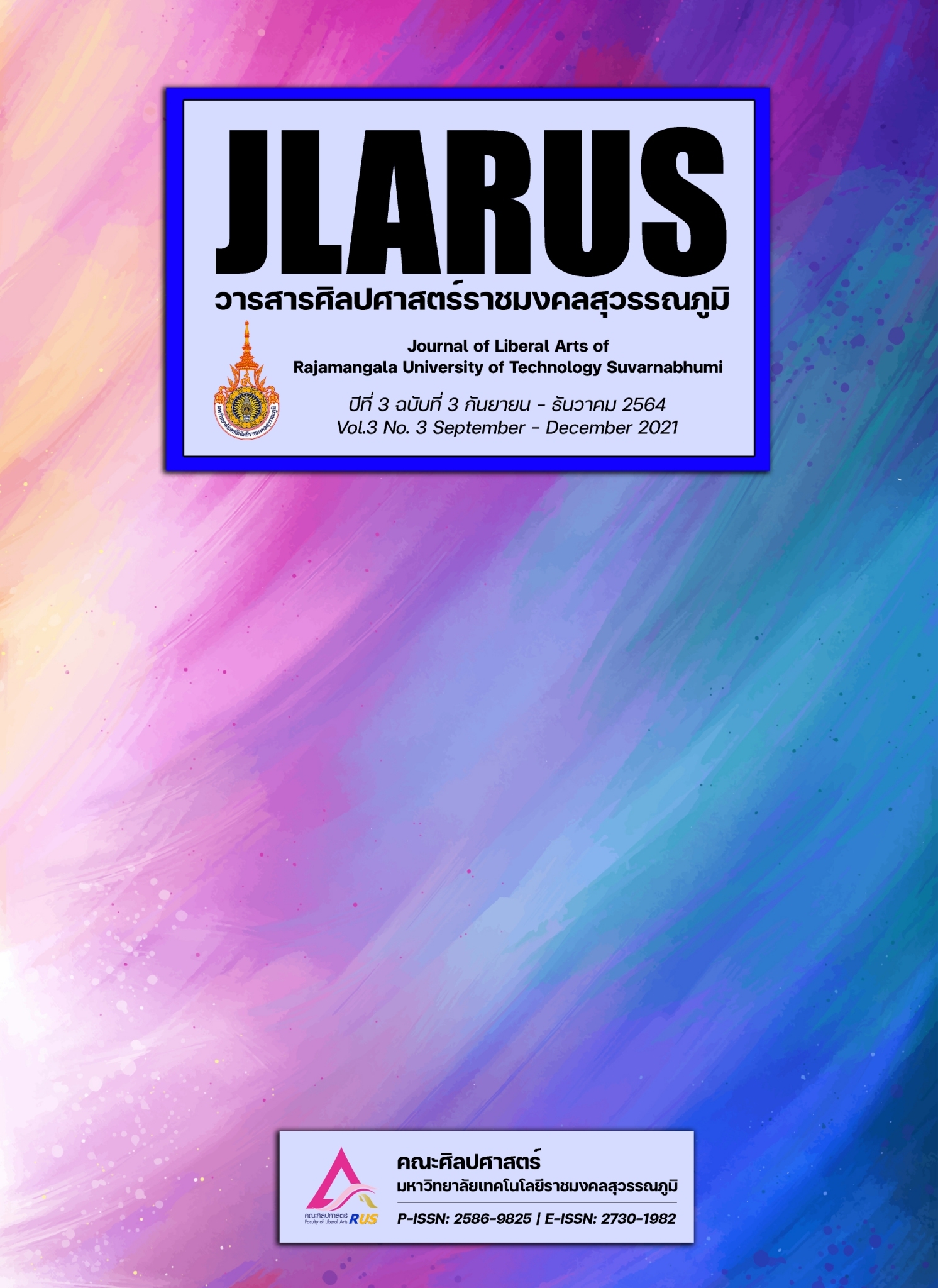UNIQUE CHARACTERISTICS OF THAI LANGUAGE AFFECTING TRANSLATION INTO ENGLISH: A CASE STUDY OF ACADEMIC TRANSLATION
Main Article Content
Abstract
Thai language is one of the languages that has some unique characteristics that is different from other languages, especially English. At present, academic translation from Thai to English plays an important role in disseminating the knowledge constructed in Thailand and transferring it to other countries, thus leading to the transfer and exchange of knowledge that would contribute to mutual learning and development in various fields. This article aimed to study, compare, and present some characteristics of the Thai language that were different from those of the English language, which would affect the understanding and translation of academic articles from Thai into English that would be accurate, refined, natural, and match the purpose that the author would want to convey. From the review and study of the related literature and samples of translated academic documents, it was found that the unique characteristics of Thai language, which were different from English that would affect the understanding and correct translation consisted of: 1) not using a prefix for specific identification or general speech (an article), 2) omission of the subject of the sentence, 3) using synonyms with different meanings, and 4) absence of words indicating tenses in themselves. These factors often caused problems in understanding and conveying a correct academic translation. As a result, translators would need to understand the interpretation of the Thai language content and convey it in English to be accurate, refined, natural, and consistent with the objectives that the writers would want to convey. The correct understanding of the unique characteristics of Thai language related to academic work together with the appropriate translation approaches would thus allow translators to create quality English academic translations.
Article Details
References
ทิพา เทพอัครพงศ์. (2547).การแปลเบื้องต้น.กรุงเทพมหานคร: จุฬาลงกรณ์มหาวิทยาลัย.
ประทุมเพชร แซ่อ๋องและคณะ.(2560) สำนวนและความเปรียบ:กลวิธีการแปลที่ปรากฏในวรรณกรรมแปลเรื่อง “แฮร์รี่พอตเตอร์กับศิลาอาถรรพ์” วารสารมนุษย์ศาสตร์ มหาวิทยาลัยนเรศวร ปีที่ 14 ฉบับที่ 2 พฤษภาคม-สิงหาคม 2560
รมัณยา ทิพย์มณเฑียรและชัชวดี ศรลัมพ์.(2560) การแปลสำนวนภาษาอังกฤษจากภาพยนตร์ชุดแนววัยรุ่นเป็นภาษาไทย.การประชุมวิชาการเสนอนผลงานวิจัยระดับชาติและนานาชาติ ครั้งที่ 8
ราชบัณฑิตยสถาน. (2554). พจนานุกรมฉบับราชบัณฑิตยสถาน พ.ศ. 2554. กรุงเทพมหานคร:ศิริวัฒนาอินเตอร์พริ้นท์
สมบัติ ศิริจันดา. (2555).ภาษาไทยเพื่อการสื่อสาร.กรุงเทพมหานคร: ห้างหุ้นส่วนจำกัด ทีพีเอ็น เพรส.
สัญฉวี สายบัว. (2538). หลักการแปล. กรุงเทพมหานคร: มหาวิทยาลัยธรรมศาสตร์.
สุพรรณี ปิ่นมณี. (2554).การแปลขั้นสูง.กรุงเทพมหานคร:จุฬาลงกรณ์มหาวิทยาลัย
สุพรรณี ปิ่นมณี.(2552). แปลได้ แปลดี.กรุงเทพมหานคร:จุฬาลงกรณ์มหาวิทยาลัย
เสรี ชมชอบ. (2542). การแปลเบื้องต้น. อุบลราชธานี: สถาบันราชภัฏอุบลราชธานี
อัจฉรา ไล่สัตรูไกล.(2548) หลักการและวิธีการแปล.กรุงเทพมหานคร: สำนักพิมพ์มหาวิทยาลัยรามคำแหง
Catford, J.C. (1965). A Linguistic Theory of Translation. London: Oxford University Press.
Hatim, B. & Mason, I. (1990). Discourse and the Translator. New York: Longman Inc.
Larson, Mildred L. (1981). Meaning-based Translation: A Guide to Cross-Language Equivalence. New York: University Press of America.
Longman. (2013). Longman Dictionary of Contemporary English. Harlow Essex: Longman Group.
Merriam-Webster. (2013). Merriam-Webster’s Advanced Learner English Dictionary. Springfield: Merriam-Webster Inc.
Newmark, Peter. (1996). Teaching Translation from Spanish to English: Worlds Beyond Words. Canada: University of Ottawa Press.


